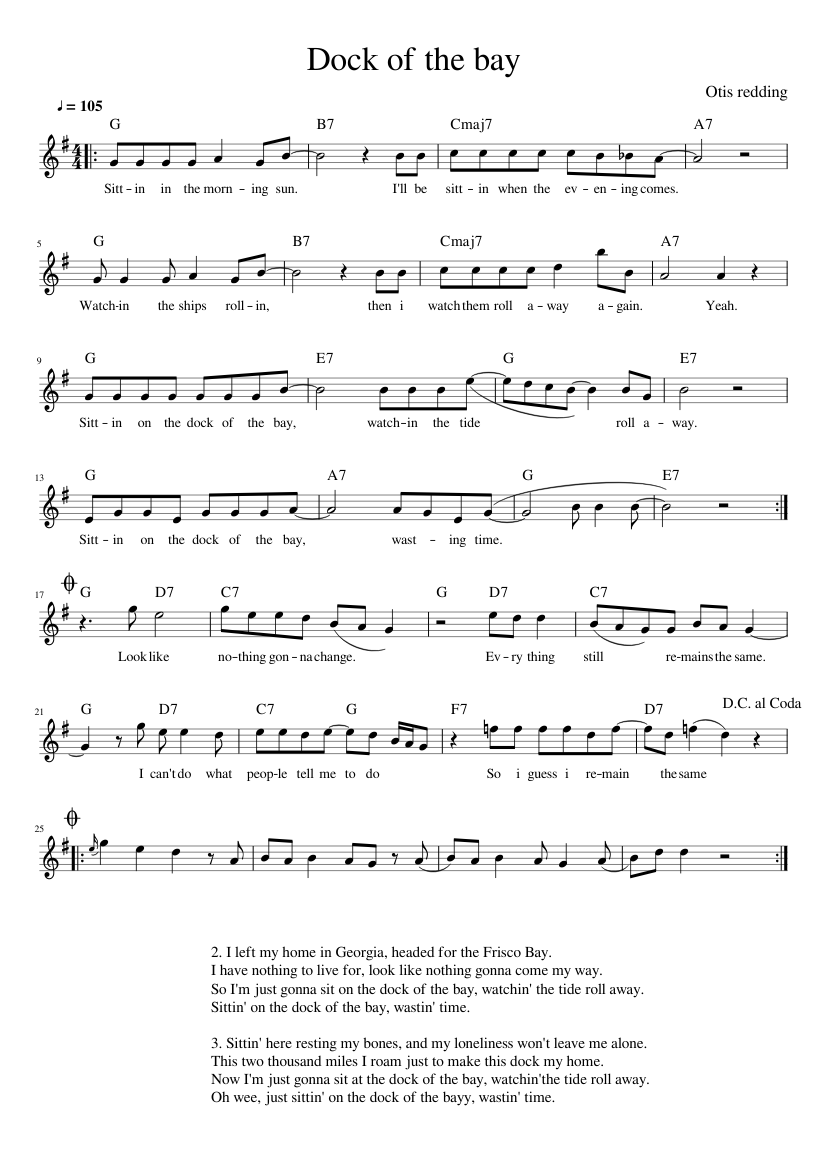
But the fact that he passed away probably helped the sales some, made people more aware of it.” I think it’s as good as anything you’ll ever hear. “I’ve read articles that said if Otis had not been killed in a plane crash, the record would’ve never made it,” he says. Redding’s single (Sittin’ On) The Dock Of The Bay went on to sell more than four million copies, and won two Grammys.Ĭropper is quick to refute any suggestions that it was only successful because of what happened to Redding. It was a huge hit in the United Kingdom too, making the top three.Īs with parent album The Dock Of The Bay, sales outstripped any of Redding’s previous releases. By March it had reached the top of the Billboard chart. Released in early January 1968, less than a month after Redding’s death, (Sittin’ On) The Dock Of The Bay was an instant success on the R&B listings. With Redding’s body yet to be recovered from the crash site, Cropper remembers that finishing the song was “maybe the toughest thing I’ve ever done”. He also overdubbed electric guitar licks, imitating a seabird. A devastated Cropper was left to mix (Sittin’ On) The Dock Of The Bay, incorporating the sound of seagulls and waves – as per Redding’s request – into the final mix. Tragically, Redding perished soon after, along with most of the Bar-Kays, in a plane crashed en route to a gig in Madison, Wisconsin. But of course he died before that ever happened.” I told Otis: ‘If you can wait a week or so, I’m doing the Staple Singers next, and I know they would love to sing on an Otis Redding song.’ He thought that was a great idea. We decided that maybe background vocals would be good. “Otis and I both agreed it wasn’t finished,” explains Cropper, who also produced the track. “The thing is, Otis wasn’t that good a whistler, and Ronnie Capone, the engineer, told him so,” Cropper recalls. Given the singular mood and tempo, Redding had trouble ad-libbing one of his habitual raps at the end.

We’d listen to it over and over, and we all kind of knew it was a hit.”Ī distinctive moment comes not long before the fade-out. The Dock Of The Bay was in the can, and after each recording session we didn’t have anything better, so we’d get that one out and listen to it again. Because Otis wasn’t on tour at that time, we had him in the studio for at least a week or more. We just thought that maybe this was the one. “It was medium tempo, but it wasn’t a dance song and it wasn’t a ballad either. "It was a crossover for Otis,” Cropper says.


 0 kommentar(er)
0 kommentar(er)
